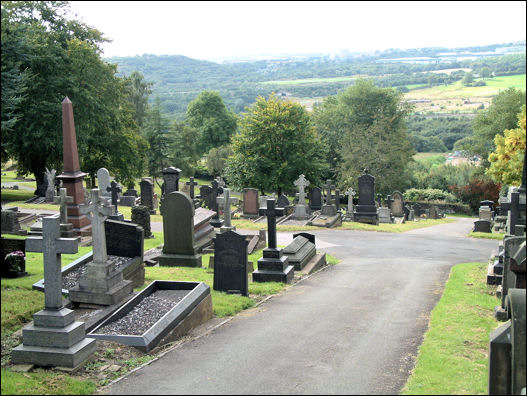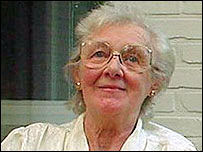“My grandfather, Charles Henry Riley, was the innkeeper of the Swan
Hotel in Burslem for many years,” says local businessman David Riley.
“He was the king of his castle at the hub of the town and everybody
conformed accordingly. Regulars were favoured while troublemakers knew
better than to ask for admittance.
The local police used his backroom each afternoon for private sessions.
The local barber called round to cut his hair and groceries were
delivered to his door. He had a parrot each end of the bar one of which
was named Joey that repeated everything it heard. ‘Is Norman in?’
customers teased. Norman was my dad. And Joey would repeat – ‘Is Norman
in?’ Sometimes rude words were repeated. But my grandfather loved that
parrot. The only time I saw my grandfather cry was when the parrot
died.”
|
“I’m not entirely certain whether this was by device or desire,” says
Tunstall historian Don Henshall. “Certainly there seems to be a large
gathering of publicans here in the old part of the cemetery.
It’s really amazing to see how many are listed – Arthur Rigby of the
Wheatsheaf, Edwin Bloor of the Dog and Pheasant. Luckily the Wheatsheaf is
still standing. But many of the others have disappeared in Tunstall’s
changing face; the Plough Inn, the Black Horse, the Prince of Wales and
the Bridge Inn. Where are they now? Where were they then?”
I rub my eyes in disbelief to find that Don is right. Eleven graves in a
row as though they’d all been lined-up for one final glorious happy hour.
“Arthur Rigby who died in 1937, was pretty special from all accounts,” Don
continues. “He was so popular the patrons had a mosaic front doorstep laid
out in memory of him. And it’s still there.”
Here lie publicans and poets; the famous and the not-so-famous; side by
side in death. |
“Tunstall cemetery is really unique,” says historian Steve Birks. “It
lies on the eastern slope of Chatterley Valley and is so steep that you
wonder how the graves manage to cling to the side. I mean they’re all laid
level which means that often one end is tilted so much higher to
accommodate the sheer landfall. But this lends a lot to its charm.”

Graves clinging to the side of Chatterley Valley
Tunstall Cemetery was settled on part of an ancient piece of land known as
Tunstall Farm in 1868.
“The Sneyd family were the owners of about 1250 acres in the manor of
Tunstall in the 18th century,” Steve continues. “This included Holly Wall
Farm and Tunstall Farm at Clay Hills, north-west of Tunstall. We know that
in 1830 Tunstall Farm was in the occupation of a Mary Younge and the land
on the east side of the farm was in the ownership of the Smith Childe
family of Newfield Hall. Seven acres of Tunstall Farm were sold to Mr
Robert Williamson, coal and ironmaster, who opened Goldendale ironworks
with his brother Hugh Henshall Williamson in the 1840s.”
In addition to the regularly apportioned Anglican, Catholic and
Non-Conformists, there is these days, a delightful corner that is being
used by Tunstall’s large Muslim community; evidence of the town’s cultural
assimilation even when life is done.

the graves of Father Welch and Father Ryan
“The Catholic quarter is headed by two famous priests, Father Welch and
Father Ryan. Ryan was held in great esteem throughout North Staffordshire.
Legend has it that when he died in 1951, his funeral procession was five
miles long bringing the district to a stand still in an amazing show of
respect and affection. His genius seemed to be in getting the community
involved, a tribute to his energy in constructing the inspiring Church of
the Sacred Heart in Queens Avenue Tunstall.”
Another special resting place is that of Hortense Daman Clews, a wartime
heroine and concentration camp survivor who received many honours for her
bravery during the Second World War.
“As a child of 13 Hortense was working for the Belgium Resistance as a
go-between behind the lines in her home town of Leuvan and giving
shelter to allied airmen,” explains Steve.
“In 1944, her family were betrayed and Hortense was sent to the infamous
Ravensbruck concentration camp where she was subjected to many bestial
privations. Liberated by Russians, Hortense made her way back home where
she met her husband, Sergeant Sydney Clews, from Tunstall. The couple
married and came to England in 1945, Sydney died in 1994.”

Hortense Daman Clews
![]()
![]()
![]()